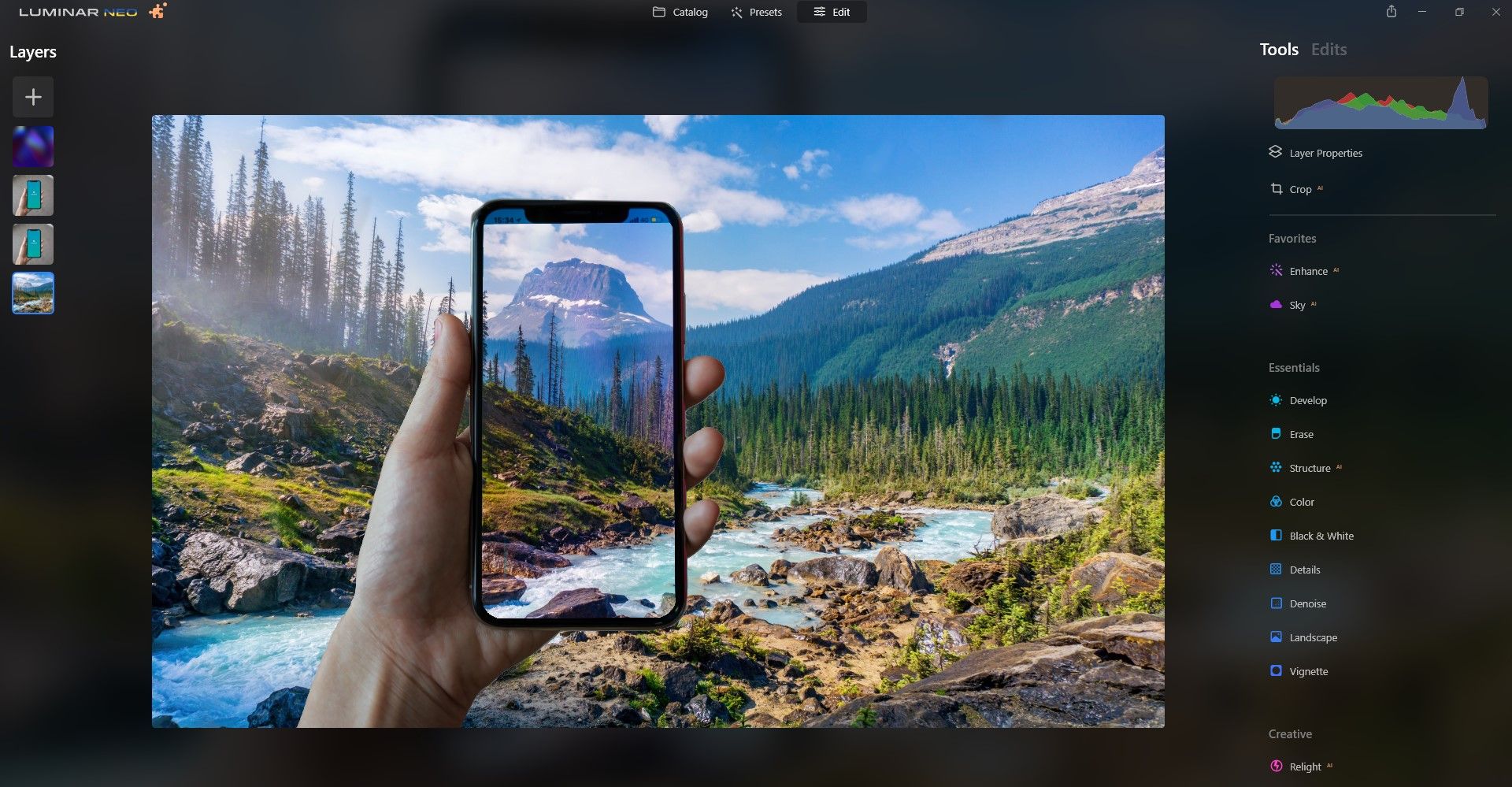
Creators can combine multiple images as layers on a single canvas, including RAW images for maximum control over color and light. Skylum’s Luminar Neo, expected to launch this winter, is a Photoshop-Lightroom plug-in that mixes AI-based edits with layer-based editing, specifically targeting photographers’ pain points and simplifying complex editing routines.
#Luminar neo layers software
Skylum, the developers of Luminar AI, will soon launch another stand-alone photo editor and the new software will use 3D depth mapping to correct light. Visit the Skylum website for more information. But as of October 4, Skylum has announced that Luminar 4 has been retired but the company will continue to provide support to current users for a limited period of time. Over time, Skylum will release new AI-powered tools and effects powered by this new core engine.Updated 10/5/21: With the recent announcement of Luminar Neo, shipping this winter, Skylum users have questioned the direction the company and what will become of current software, like Luminar 4. The complete modernatizion of the Luminar engine unlocks many new and useful options for editing and compositing that will delight artists and photographers. This hybrid approach to rendering is just one example of how Luminar Neo’s core engine is built to solve problems now while preparing for future innovation. This approach allows users to selectively remove and reorder the application of tools and effects then quickly render these changes with the flexibility of a parametric editor. As a result, the overall editing environment is faster and more stable. In addition, a smart edit history provides infinite levels of undo for every image.

Changes are rendered as the edit progresses. This approach makes rolling back changes simple and fast but requires much longer render times, particularly with tools built with AI technology. Parametric editing previews changes but does not apply them until the image is exported. In traditional editors, sequential rendering stores modified pixels at every step of the edit, which can make rolling back changes more difficult. Skylum states that the new engine marries the speed and efficiency of sequential rendering to the creative flexibility of parametric editing. Skylum also went into details about the new engine behind Luminar Neo, which the company is promising to be a strong foundation for the future. The result of the tool is restricted to the masked area. Mask AI includes masks for portraits, skies, water, mountains, vegetation and architecture, with more masks expected to be released over time. Once the tool is selected, a context aware mask can be applied, for example limiting the edits to a building or the trees.

Still, Skylum adding back layers was the most common feature request we saw with Luminar AI. Merged layers and stamped layers will also not be available at launch, but will come with a future update. There are also some limitations, for instance not being able to rename layers and the fact that there are no adjustment layers.

Layer names will only be available on hover, meaning you can keep a minimal interface going while working with them. With Skylum’s implementation of layers, it appears like the company is trying to ease the burden that traditional tools often have with layers. Luminar Neo includes built-in overlays and object libraries which allow artists to start creating layered compositions right out of the box. Once these elements are on a layer, they can be easily moved, rotated and flipped to place them precisely within the composition. Textures and other graphic elements can add additional flourishes to the final work. PNG images with transparency can be added to layers, allowing artists to move beyond strictly photographic compositions. Blending, masking and opacity can be used to create collages, double exposure effects and other powerfully creative interactions between layered photos.


 0 kommentar(er)
0 kommentar(er)
